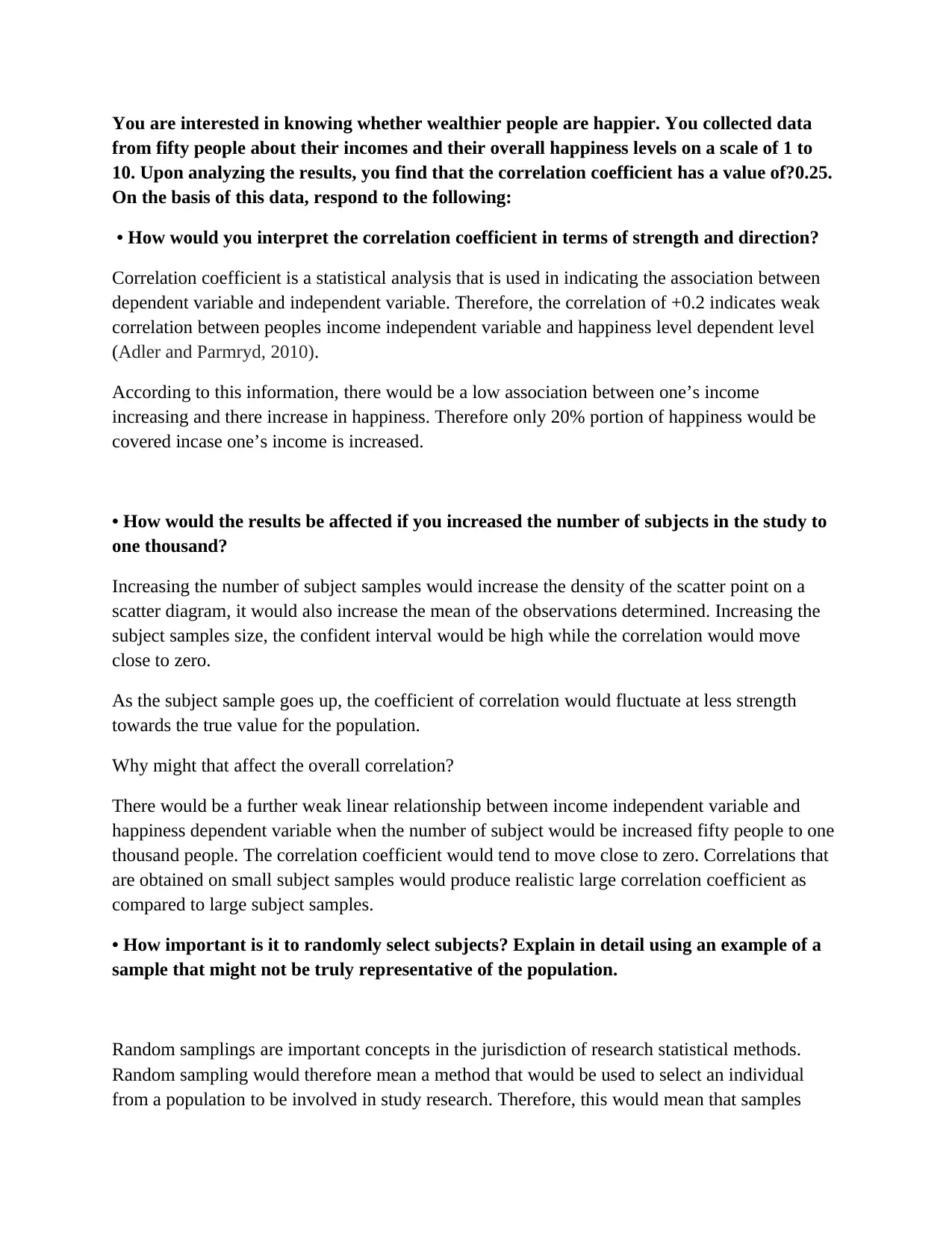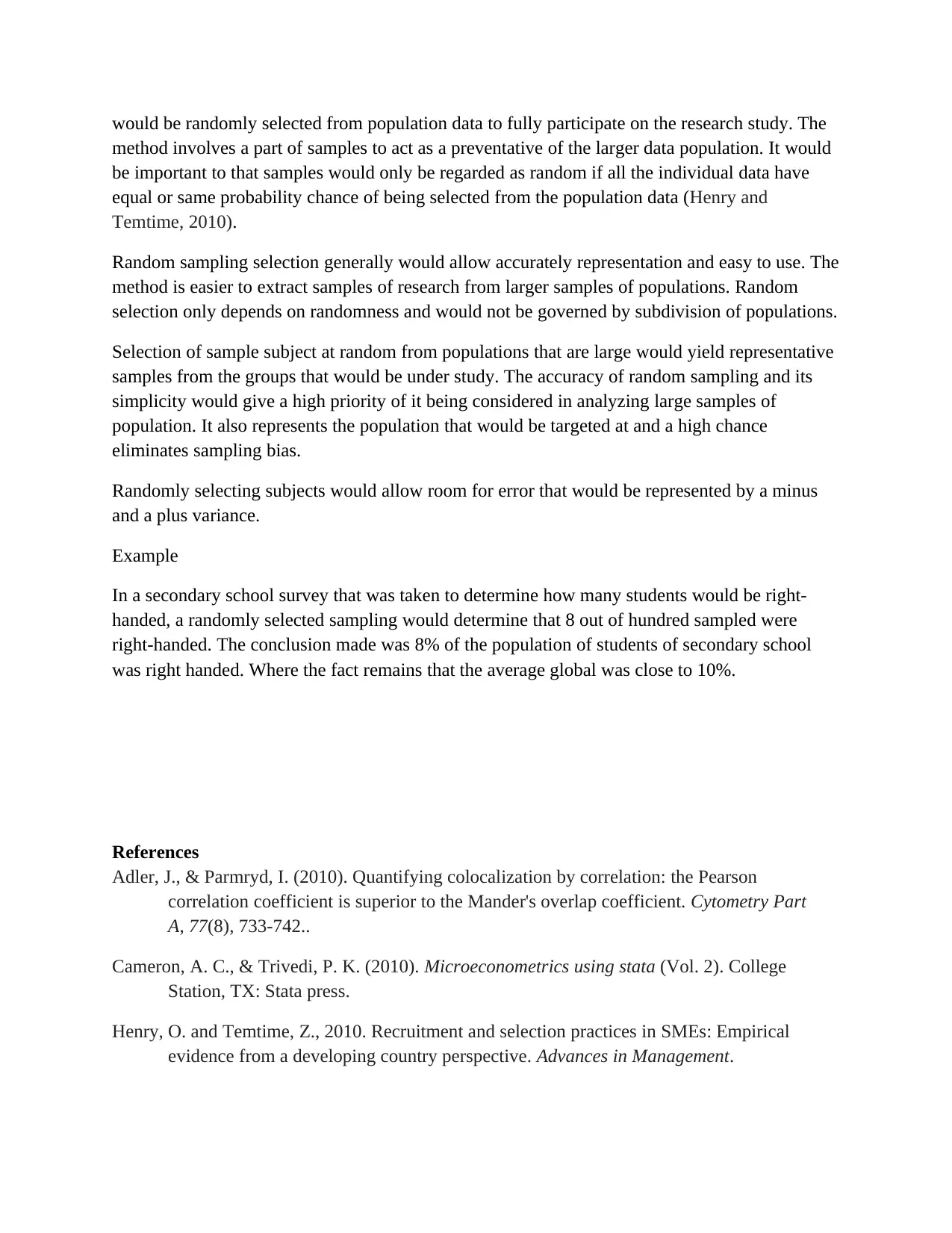University Statistics Assignment: Correlation and Random Sampling
VerifiedAdded on 2023/01/19
|2
|777
|38
Homework Assignment
AI Summary
This assignment examines the concept of correlation coefficients, specifically focusing on a scenario where the correlation between income and happiness is analyzed. The student is tasked with interpreting a correlation coefficient of +0.25, indicating a weak positive correlation, and explaining its implications. The assignment further explores the impact of increasing the sample size to one thousand subjects, predicting that the correlation would likely move closer to zero and the confidence interval would increase, due to the increased density of data points and the coefficient's fluctuation toward the population's true value. The importance of random sampling is emphasized, with a detailed explanation of its role in ensuring accurate representation and minimizing bias, supported by an example of a survey to determine the number of right-handed students in a secondary school. The assignment uses statistical analysis, including the Pearson correlation coefficient, and references relevant academic sources.
1 out of 2






![[object Object]](/_next/static/media/star-bottom.7253800d.svg)